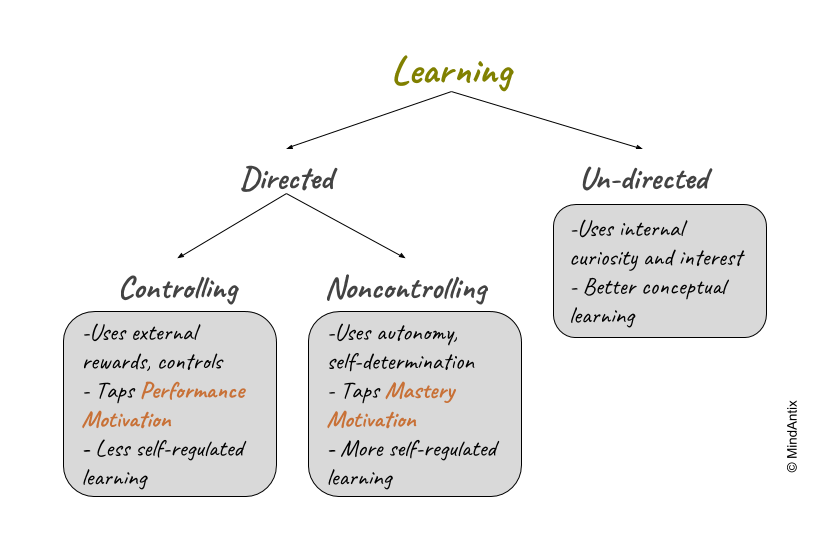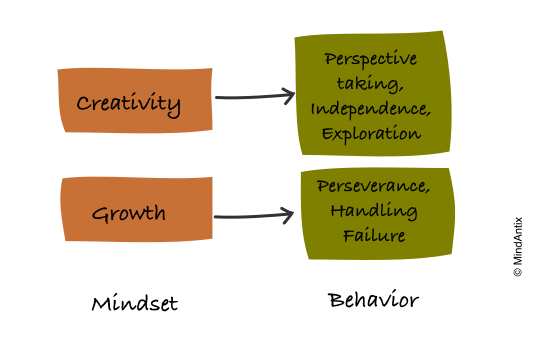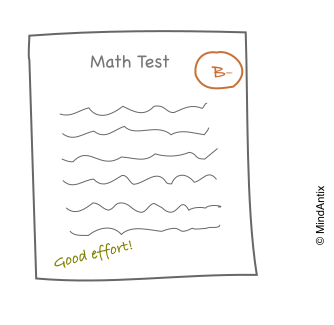As a child, Alexander Graham Bell, the prolific inventor best known for inventing the telephone, was intensely curious about the world. He built his first real invention – a simple dehusking machine – at the young age of twelve! While Bell was no doubt a smart and inquisitive child in his own right, his upbringing also played a big part in his success. His father was an inventor of sorts himself and he actively encouraged Alexander to make a speaking automaton. These early experiences paved the way for his future accomplishments. In other words, he grew up in an environment that valued creativity and problem solving.
Creativity, as a cognitive skill, is becoming increasingly important in our world as routine jobs get automated. To be successful children now need more than literacy and numeracy skills – they also need to be confident creative problem solvers. The first step towards this is building a creativity mindset.
So, how can parents help orient their child towards creativity? Here are three broad strategies you can use as a parent to start shifting your child’s mindset towards creative problem solving.
Make Creativity A Part Of Your Vocabulary
Most parents take a deliberate approach to help their child learn from an early age. They might casually introduce a new word during conversation or bring in numbers to build their child’s budding reading and math skills. This not only improves the child’s skills in the 3Rs but it also orients them towards those skills in the real world – they might notice new words more often or see mathematical connections in everyday situations.
In a similar way, talking about creativity and everyday inventions can open their minds towards creative problem solving. One activity we do when we start our invention classes is to have a discussion about creativity by analyzing everyday creations around us. What makes something both novel and useful (the core definition of creativity)? As students start discussing and analyzing things around them, they start to realize that everything around them is an invention – created by someone, or more accurately by many people over time, in order to make our lives more efficient. Parents can do the same exercise at home. As an example, a conversation between a parent and their child about a painting on the wall might go like this:
P: Is that painting on the wall an invention?
C: It’s original because I haven’t seen this painting anywhere else and it’s useful because it makes people feel good.
P: That’s a good point about art making people feel good. Humans have been making art for a long time – even before they made language.
C: Like cave paintings.
P: Yes, like cave paintings! How are paintings now better than cave paintings?
C: Cave paintings were fixed to the cave wall. But today, you can move them around – you can take your paintings with you if you move houses. So that’s another way it’s an invention.
In our experience, children find this to be an eye-opening exercise and it opens their minds to creative problem solving. They start to look at things in their world a little differently. A few days after I did this exercise with my son, who would have been a 1st or 2nd grader at the time, he suddenly had an epiphany while we were driving. He excitedly shared an idea that could avoid holiday lights from getting tangled up. What if the lights were sewn onto a net that could be draped over a tree when in use, and then folded up neatly when done? Not a bad idea for such a common problem!
Don’t Teach, Co-create
Even when parents understand the importance of creativity, they often try to “teach” it to their children. A more effective method is to co-create something with them – like making a new story, a fun game or a cool gadget together.
Children, and even adults, learn implicitly from others as much, if not more, than by being explicitly taught. Our brains are wired to detect patterns and connections around us and use them to update our models of the world. By continually updating and refining our internal models as we integrate new ideas, we improve our understanding of the world. Learning is more efficient when we deduce the pattern ourselves instead of when the pattern is taught to us. When you co-create with your child, they start picking up ideas and automatically integrating them in ways that are compatible with their current knowledge. As almost all parents have experienced, you might be focusing on one idea but your child might pick up on a different one. In effect, co-creation leads to a fully personalized learning – one that fits perfectly with your child’s current mental models.
There are two additional advantages to co-creation. One, traditional teaching approaches can be perceived by the child as evaluatory and controlling, which raises their defenses. They are much more likely to engage in activities that are collaborative and low pressure in nature. The second advantage is the emotional aspect. Emotions bind the learning much more strongly, and positive emotions are better than negative. So if an activity is viewed as a fun family experience with lots of laughter and love, then not only is the child willing to engage in it more frequently, but what she learns from the experience is deeper.
The advantages of engaging in co-creation take some time to become evident. For example, if you start a dinner time routine of making silly stories, you might notice that your child doesn’t offer that many ideas or plays safe by reusing your ideas in the beginning. Don’t let that discourage you. Over time, you will see that the complexity and the novelty of their ideas start to increase as your child gets more comfortable, both cognitively and emotionally, with the activity.
Do More Arts At Home
High quality art programs, including visual arts and music, have been shown to benefit creativity and related skills. In the case of Alexander Graham Bell, his mother encouraged his interest in art, poetry and music. Despite any formal training in music, he mastered the piano and became the “family pianist.”
Arts provide children with a canvas to try new things and take more risks, skills that can transfer more broadly to other domains as they grow older. A research study found that incorporating arts increased both children’s self-efficacy and original thinking. As the authors noted, “Self-efficacious children believe they can be agents in creating their own futures and are more optimistic about what the world has in store for them.”
Another benefit of doing arts is that it provides an easy avenue to experience flow – where one is fully immersed in the task that action and awareness seem to merge. Experiencing flow not only helps improve mental health, it also builds a more intrinsic orientation towards learning which is beneficial in the long run.
A creative mindset developed at an early age can have a tremendous impact on a child’s long-term success allowing them to make meaningful contributions to society. Parents play a crucial role in this. By helping their child understand creativity and by engaging in creative activities with them, they can equip their child with the right mindset and confidence.




